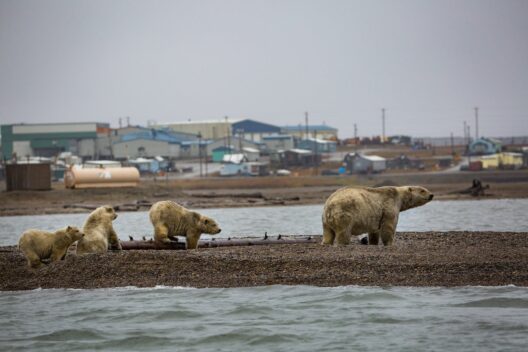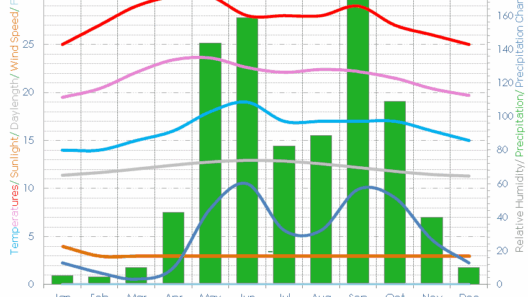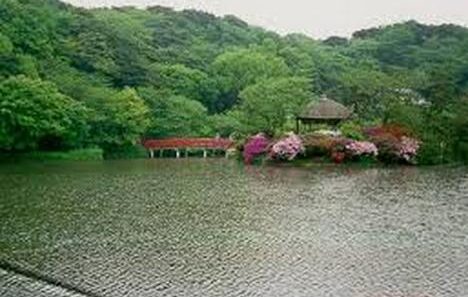Alaska, renowned for its breathtaking landscapes and diverse ecosystems, presents a climate that is as multifaceted as its geography. The phrase “Frozen Wilderness” conjures images of expansive glaciers, snow-covered mountains, and frigid temperatures; however, the state is also home to phenomena such as the “Midnight Sun.” This article seeks to explore the complexities of Alaska’s climate, revealing how its extremes influence both the environment and human activities.
The climate of Alaska is dictated by several factors, including geography, elevation, and proximity to the ocean. Typically, the state is divided into five climatic regions: the maritime climate of the coastal areas, the subarctic climate, the polar climate in the northern extremes, the continental climate in the interior, and the tundra climate. Each region is defined by distinctive seasonal variations, temperature ranges, and precipitation patterns. However, the unifying thread across all regions is the impact of climate change, which is beckoning a shift in perspective regarding Alaska’s environment.
In the southern coastal regions, where the Pacific Ocean meets the land, a maritime climate prevails. Here, temperatures are moderated by oceanic currents, resulting in milder winters and cool summers. The range of temperatures is narrower compared to the interior regions, characterized by frequent rainfall and fog. This dampness fosters a rich marine ecosystem, teeming with wildlife such as sea otters and salmon, which rely on the health of the oceans for survival. Coastal communities are intimately connected to these ecosystems, managing the delicate balance between subsistence living and modernization.
Traveling northward into the interior, one finds a markedly different climate. The continental region is defined by sharp contrasts. Summers can soar into the 90s °F, while winter temperatures can plummet to below -50 °F. This dramatic fluctuation is reflected in the annual cycles of vegetation and wildlife. The taiga, or boreal forest, pulses with life during the summer months, offering a stark contrast to the deeply frozen landscape of winter. As the temperature drops, animals such as moose and caribou adapt by migrating or entering a state of dormancy. The endurance of these species amidst extreme conditions speaks to the tenacity of life in Alaska.
In contrast, the arctic regions of Alaska present a polar climate, characterized by persistent cold, minimal precipitation, and a landscape dominated by tundra. This biome is a frozen wasteland for most of the year, yet it is teeming with a unique array of flora and fauna adapted to the harsh conditions. Arctic foxes, polar bears, and migratory birds showcase the resilience of life in a seemingly desolate environment. These ecosystems are currently under severe threat due to global warming, with melting permafrost releasing methane and exacerbating climate change—a worrying feedback loop that could have far-reaching consequences.
The phenomenon of the Midnight Sun deserves special mention when discussing Alaska’s climate. During summer months, particularly around the solstice, the sun does not set in regions above the Arctic Circle, providing up to 24 hours of sunlight. This celestial occurrence shapes everything from agriculture to tourism, enabling unique activities such as midnight hiking or fishing. Conversely, winter subjects these areas to prolonged darkness, challenging not only wildlife but also the human psyche. The juxtaposition of light and dark dramatically affects the rhythms of life, highlighting the adaptability of both the environment and its inhabitants.
Climate change casts a long shadow over Alaska, knitting together disparate climate conditions into a composite understanding that transcends mere weather patterns. Glaciers are retreating at alarming rates, with the state losing over 75 billion tons of ice annually. The repercussions of this loss ripple through the community. As glaciers recede, sea levels rise, threatening coastal habitats and indigenous cultures that depend on marine resources. Additionally, changing temperatures are disrupting traditional hunting and fishing practices, further underscoring the urgent need for sustainable practices that respect Indigenous knowledge and advocate for community resilience.
Change is not just an ecological phenomenon; it is deeply social and economic as well. Alaska hosts a multitude of Indigenous communities, each with distinct relationships to their environment. The implications of climate change on their lifestyles, traditions, and rights are profound. These communities offer invaluable insights into sustainable living, reminding the world of the importance of biodiversity and the interconnectedness of ecosystems. Their adaptive strategies in the face of climate change can provide crucial lessons in resilience for wider society.
As we reflect on the intricate climate of Alaska, we are beckoned to reassess our relationship with nature and our response to climate change. The frozen wilderness and the bright embrace of the Midnight Sun serve as reminders of nature’s duality—its beauty and its fragility. Utilizing Alaska’s unique climatic features can foster curiosity and stimulate discussions around conservation efforts, sustainable practices, and the necessity of proactive measures in the face of climate degradation.
In recognizing the elegance and complexity of Alaska’s climate, we invite a collective commitment to protect and preserve the intricate balance of this diverse ecosystem. The breathtaking landscapes that define this frozen wilderness demand respect and understanding. They echo a clarion call to action: to foster a sustainable future that honors ancestral wisdom while innovating solutions for generations to come. Together, we can transform our understanding of climate dynamics and emerge as stewards of the world, dedicated to safeguarding the richness of life that thrives in Alaska and beyond.






